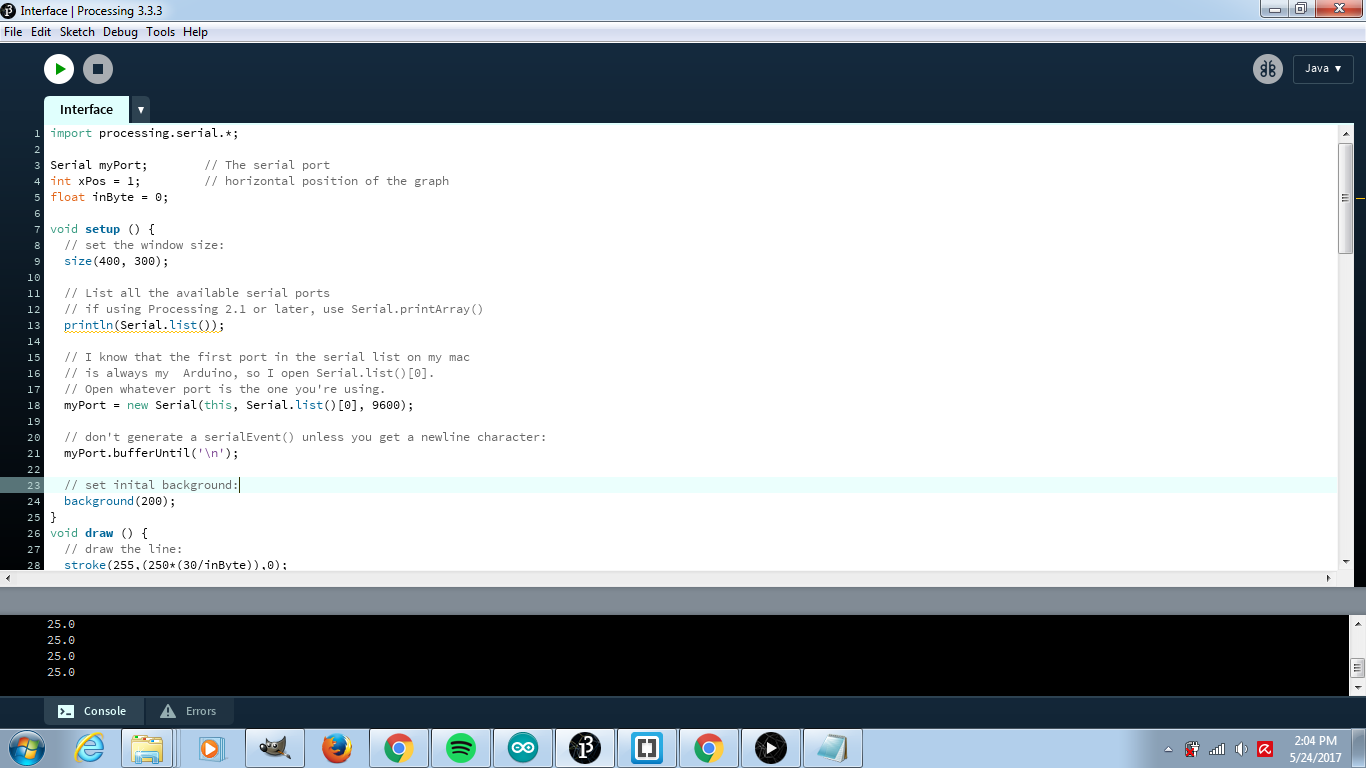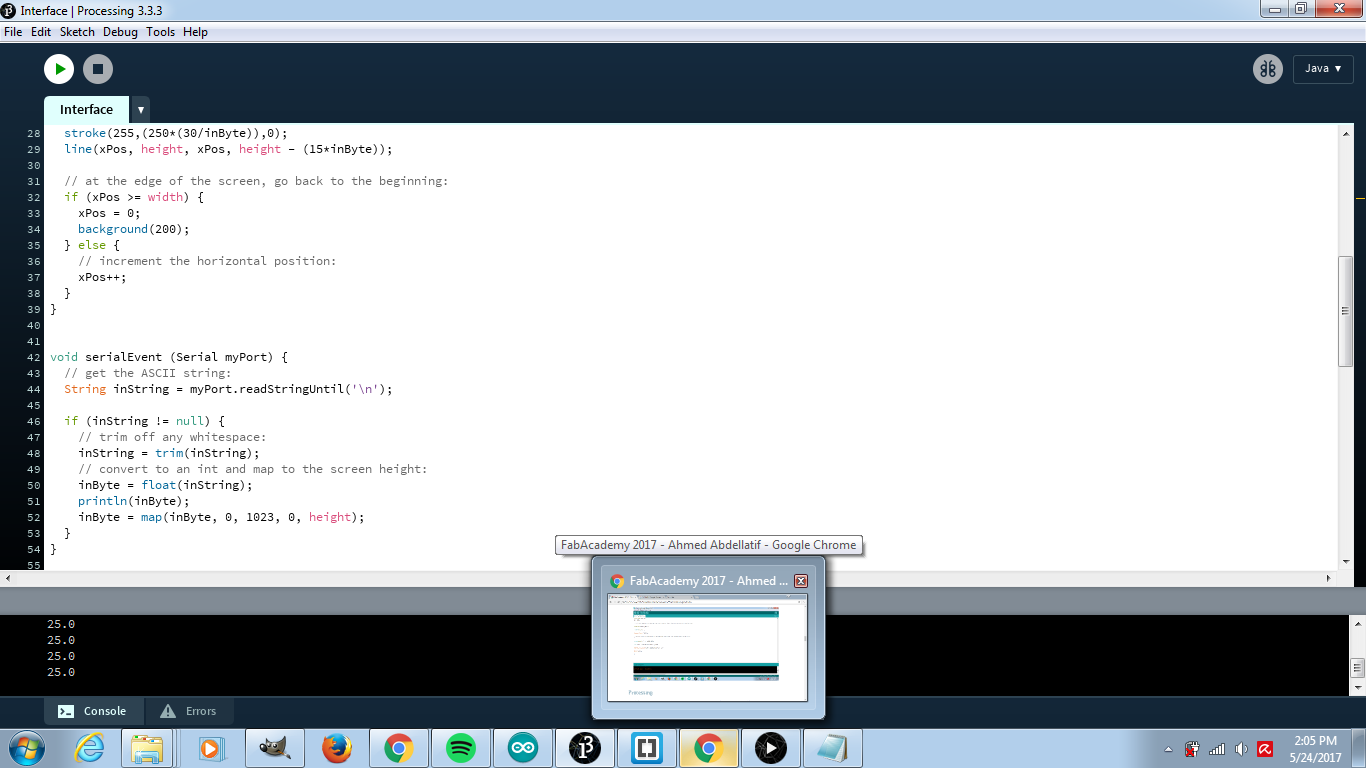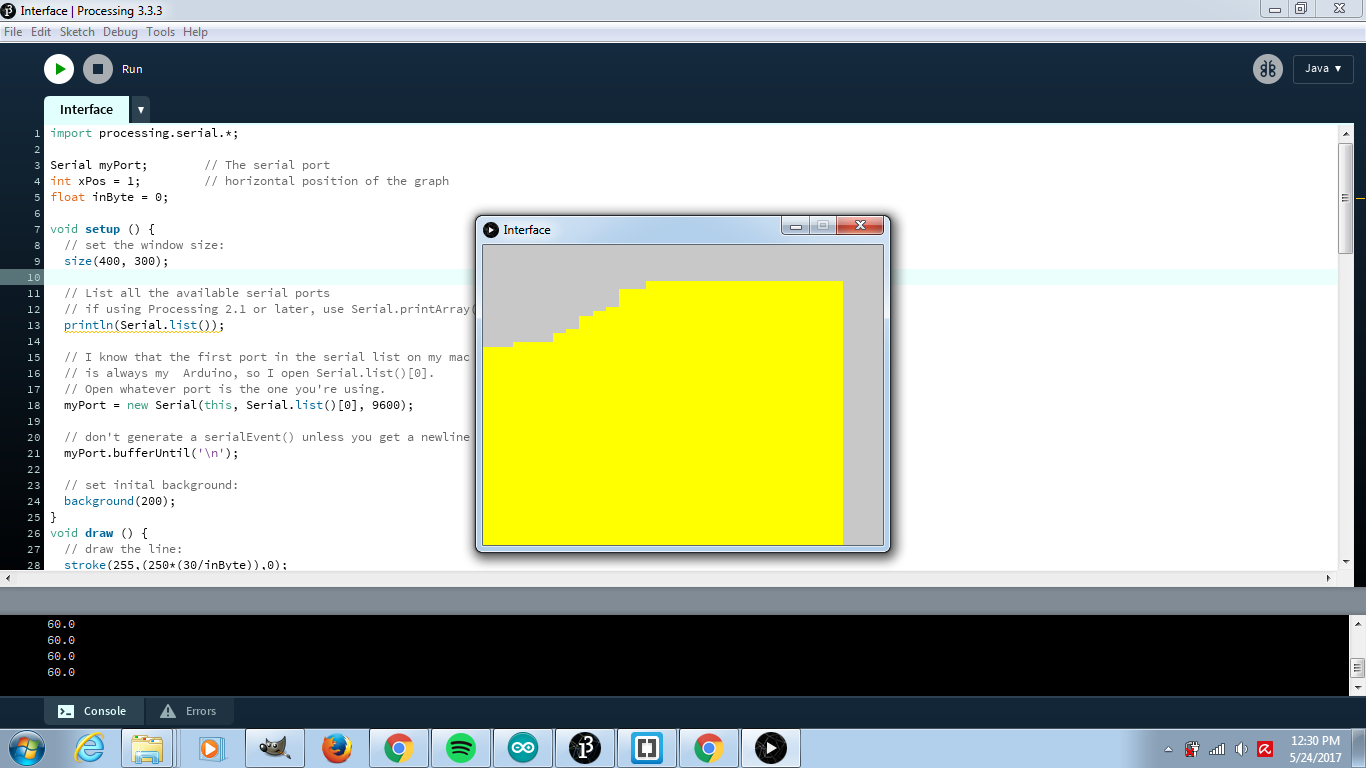- About
- Weekly Assignments
- 1 - Principles & Practices, Project Management
- 2 - Computer-Aided Design
- 3 - Computer Controlled Cutting
- 4 - Electronics Production
- 5 - 3D Scanning & Printing
- 6 - Electronics Design
- 7 - Computer Controlled Machining
- 8 - Embedded Programming
- 9 - Mechanical Design
- 10 - Machine Design
- 11 - Input Devices
- 12 - Moulding and Casting
- 13 - Output Devices
- 14 - Composites
- 15 - Embedded Networking and Communication
- 16 - Interface and Application Programming
- 17 - Application and Implications
- 18 - Invention, Intellectual Property and Business Models
- 19 - Project Development
- Final Project
- Contact
Interface and Application Programming
To fulfill the assignment I decided to use Processing To interface the output of DHT11 sensor which is sending data over serial using my version od SatshaKit
Programming the Satsha Kit
I connected my board to the sensor. It's pretty easy to do so there are just 3 lines VCC, GND and output. The output of the sensor should be connected to a digital pin I connected it to Arduino Pin 3 as I used Arduino IDE. I programmed the board using FTDI cable. This is how the connection looked like.

#include <dht.h>
dht DHT;
// if you require to change the pin number, Edit the pin with your arduino pin.
#define DHT11_PIN 3
void setup() {
Serial.begin(9600);
//Serial.println("welcome to TechPonder Humidity and temperature Detector");
}
void loop() { // READ DATA
int chk = DHT.read11(DHT11_PIN);
Serial.println((DHT.temperature*1), 1);
delay(200);
}


import processing.serial.*;
Serial myPort; // The serial port
int xPos = 1; // horizontal position of the graph
float inByte = 0;
void setup () {
// set the window size:
size(400, 300);
// List all the available serial ports
// if using Processing 2.1 or later, use Serial.printArray()
println(Serial.list());
// I know that the first port in the serial list on my mac
// is always my Arduino, so I open Serial.list()[0].
// Open whatever port is the one you're using.
myPort = new Serial(this, Serial.list()[0], 9600);
// don't generate a serialEvent() unless you get a newline character:
myPort.bufferUntil('\n');
// set inital background:
background(200);
}
void draw () {
// draw the line:
stroke(255,(250*(30/inByte)),0);
line(xPos, height, xPos, height - (15*inByte));
// at the edge of the screen, go back to the beginning:
if (xPos >= width) {
xPos = 0;
background(200);
} else {
// increment the horizontal position:
xPos++;
}
}
void serialEvent (Serial myPort) {
// get the ASCII string:
String inString = myPort.readStringUntil('\n');
if (inString != null) {
// trim off any whitespace:
inString = trim(inString);
// convert to an int and map to the screen height:
inByte = float(inString);
println(inByte);
inByte = map(inByte, 0, 1023, 0, height);
}
}
Final product


Downloads
-Arduino sketch-Processing Sketch
